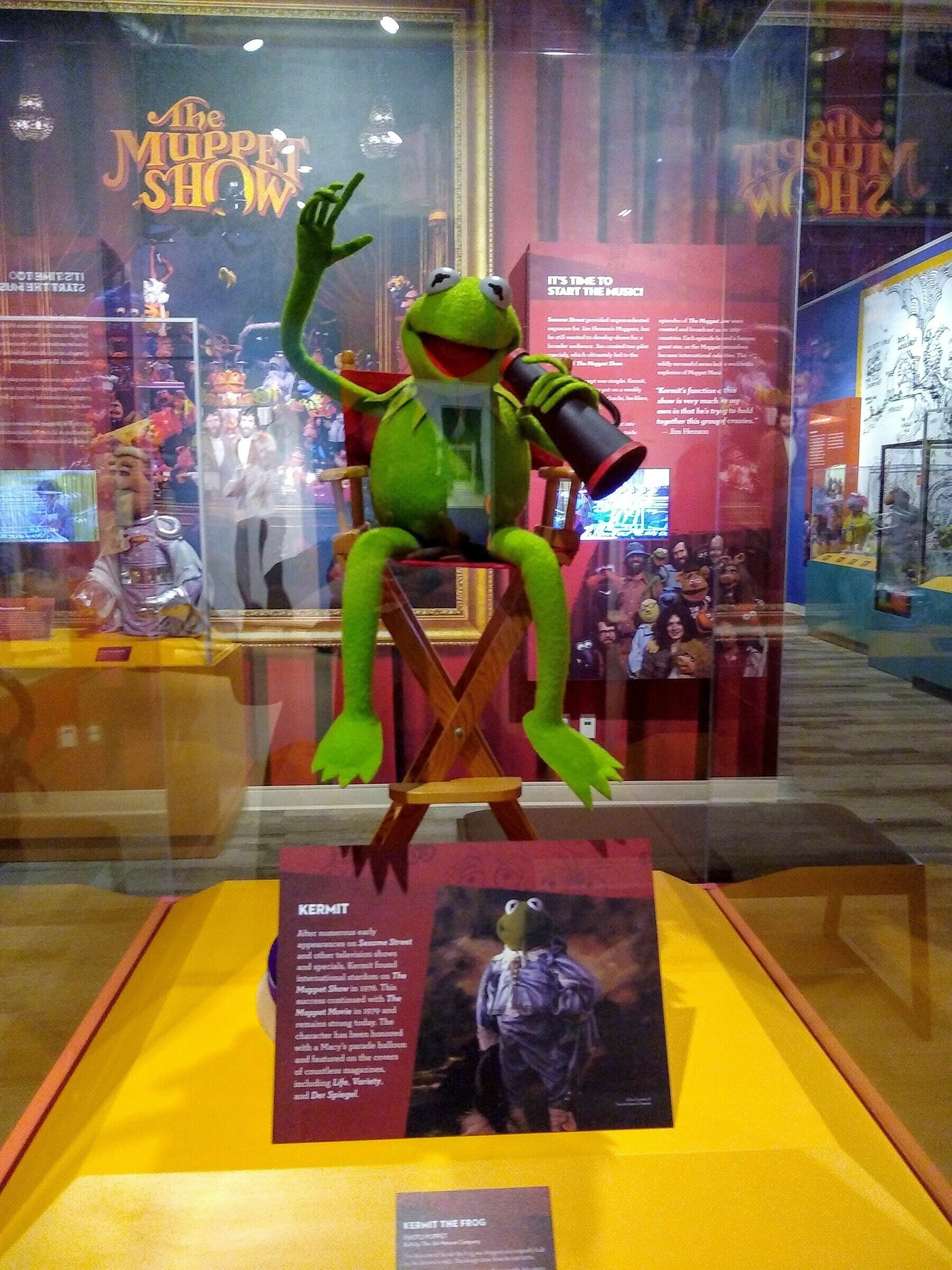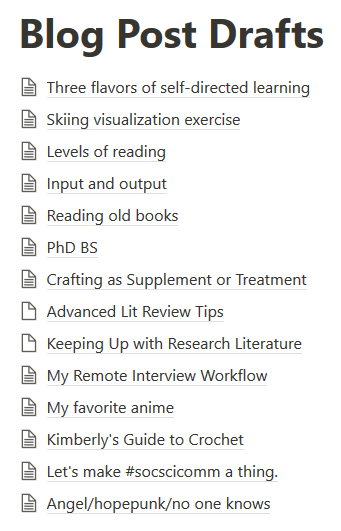Last Friday, I finished correcting the AI-provided transcripts for my dissertation interviews. This process didn’t go as I’d originally imagined it would. When I wrote my proposal, I expected to conduct these interviews over the course of the entire summer, at various fan conventions. I expected to first explore online to find where cosplayers hangout and only then recruit participants. But then COVID-19 happened, and face-to-face research was no longer an option. (It was prohibited by my university. Cons were cancelled. I’m at high risk of severe complications, so even if there had been cons, I wouldn’t have been able to go to them.) So I changed my plan significantly, starting with sampling and recruitment.
I originally was going to use purposive sampling, identifying cosplayers through my online exploration who were local to me and might be able to provide valuable insight into their information literacy practices. Once I was in quarantine, it became clear that this wasn’t going to be an option. In my revised IRB proposal, I stated that I would use convenience sampling, recruiting cosplayers with whom I had contact in the past, either because I met them in the cosplay area of the con where they were guests, or because I attended their panels. I reached out to cosplayers from two local cons I attended last year. I also used snowball sampling, asking the first several cosplayers I interviewed to recommend other people for me to talk to. At first, they were all recommending the other people I had already invited to participate, but later participants introduced me to more cosplayers I hadn’t known before, and I rapidly ended up with a group of about 12 or 13 confirmed participants, of whom 10 actually scheduled interviews.
So how did I do it? Let me take you through the process…
Recruitment
All of the cosplayers I met at the two cons I attended last year were on Instagram. I have a dedicated cosplay Instagram account that I use both for personal and research purposes. Using this account, I DMed several cosplayers with a message similar to the following:
Hi [Cosplayer Name as Listed on Instagram],
My name is Kimberly Hirsh and I am a doctoral student from the School of Information and Library Science at the University of North Carolina at Chapel Hill. I also go by Luna Wednesday Cosplay. I am writing to invite you to participate in my research study about how cosplayers find, evaluate, use, and share information. You’re eligible to be in this study because you are a cosplayer I encountered at [Name and Year of Con] when I attended your panel, [Title of Panel]. To be eligible to participate, you must have cosplayed at least once since 2012 or be currently working on a cosplay project; you must also be over 18 years old.
If you decide to participate in this study, you will draw a diagram and participate in an interview that will take about one hour. We will conduct the interview using Microsoft Zoom. I would like to record your interview and then we’ll use the recording to ensure I understood your answers to my interview questions correctly.
Remember, this is completely voluntary. You can choose to be in the study or not. If you’d like to participate or have any questions about the study, please email or contact me at kimberlyhirsh@unc.edu or @lunawednesdaycosplay.
Thank you very much.
Sincerely,
Kimberly Hirsh
kimberlyhirsh@unc.edu
@lunawednesdaycosplay
The text of this recruitment message was approved by my university’s Institutional Review Board.
If the cosplayer responded that they were interested, I would say something like,
Great! The next step is to schedule a time for an interview. You can do that here:
And provide them with a link to a special type of event using the scheduling service Calendly. This was useful because I gave Calendly access to my Google Calendar, and participants could see what times I had available and sign up directly. In most cases, we didn’t have to back and forth. A few participants weren’t available during the times on the calendar, so I worked with them to set up special times. (The limitations on my time were about childcare, and it was easy to leave M. alone with W. for an extra hour on a Saturday or Sunday to do an interview.)
If you’re curious, you can read about Calendly’s security and privacy policies and practices. Calendly is a black-owned business, though I did not know that when I selected the service for my scheduling. I am happy to know it now and plan to continue using Calendly to schedule meetings.
The Calendly event description included the following text:
For our interview, you’ll need to have paper and something to write with, and the ability to take a picture of your diagram and send it to me via DM, text, or email. You’ll also need to have the Zoom app installed; if you’ve never worked with it before, it’s probably easiest to install on a phone.
If none of the times on this calendar work, message me or email kimberlyhirsh@unc.edu and I’ll find a custom time for you.
Feel free to use your cosplay name rather than your real name when signing up for an interview slot.
Once we settled on a time, I would schedule a Zoom meeting in my University’s Zoom instance and send the details to the participant by email if they had signed up for a meeting in Calendly, or by DM if they hadn’t. Calendly does have Zoom integration, but I chose to do this manually because I wanted to fine-tune the security settings in Zoom. I used Zoom not because it is my favorite service of this type, but because it has integrated recording and is supported by my university.
I made sure to use the following security features to prevent Zoombombing:
- Password-protected
- Waiting room
- Locked room after the participant arrived
Conducting the Interview
The day before or the day of the interview, I would contact the participant either by email or DM to remind them that they would need paper and a writing utensil for the interview. I would also include a link to the consent document and release form, so I would know what name to call them in our communications, what name to call them in my writing, and what information I collected was okay to share. I created this consent document and release form in Qualtrics, another piece of software supported by my university.
This was the text of the consent document:
University of North Carolina at Chapel Hill
Research Information Sheet
IRB Study #: 20-0351
**Principal Investigator: Kimberly Hirsh **
The purpose of this research study is to explore how cosplayers find, evaluate, use, and share information. You are being asked to take part in a research study because you are a cosplayer over the age of 18 who has cosplayed at least once since 2012 or is currently working on a cosplay project.
Being in a research study is completely voluntary. You can choose not to be in this research study. You can also say yes now and change your mind later.
If you agree to take part in this research, you will be asked to draw a diagram of the sources you use for finding, evaluating, using, and sharing cosplay-related information and participate in an interview about your diagram and experiences. Your participation in this study will take about one hour. If you choose, I may contact you with follow up questions sometime in the next 6 months. Each follow up question should not take more than 15 minutes of your time and I will not ask you more than 3 follow up questions. We expect that at least 10 people will take part in this research study.
The possible risks to you in taking part in this research are:
- Feeling uncomfortable discussing your information process
- Having someone else find out that you were in a research study
- Potential loss of confidentiality of data
The possible benefits to society from this research are:
- Making it easier for cosplayers to find, use, share, and evaluate information in the future
- Helping information literacy educators understand how people work with information when they pursue their own interests
To protect your identity as a research subject, the researcher(s) will not share your information with anyone unless you choose. In any publication about this research, your name or other private information will not be used unless you request that it be. If you have any questions about this research, please contact the Investigator named at the top of this form by calling [my phone number] or emailing kimberlyhirsh@unc.edu. If you have questions or concerns about your rights as a research subject, you may contact the UNC Institutional Review Board at 919-966-3113 or by email to IRB_subjects@unc.edu.
The release form included the following questions:
Please state your initial requests regarding the use of your name and the information you provide, as well as any media I collect. You can change your requests at any time! If you agree to be recorded, you can tell me to turn on and off the recorder at will. If you permit me, I may record your interview. You may choose whether I use your information horizon map as an example in my final dissertation report or not.
All recordings and photographs will be stored on secure UNC servers, password-protected, and accessed only through a Virtual Private Network.
What name should the researcher call you?
Is it okay to identify you in the project? (This included a space to write the name that should be used for identification in the project.)
Is it okay to record you for the project?
Is it okay to use videos of you in the project?
Is it okay to use photographs of you in the project?
Is it okay to publish your information horizon map, the diagram you will be creating in our interview?
About fifteen minutes before the interview, I would get set up in the space I was using, either my home office or my bedroom depending on what W.’s schedule was that day and whether he needed a more private space (the bedroom) to give a presentation. I would plug in my headphones. I would load up Firefox with the following tabs:
The Qualtrics survey was so I could refer to it and make sure I used the correct name for the participant and that it was okay to record. Instagram and email were open so that I could see if the participant needed to communicate with me last minute (this happened at least once, when we ended up delaying the interview by an hour or two because of the participant’s work schedule) as well as so participants could send me their information horizon maps.
We began each interview with greetings and introductions, followed by the information horizon maps. I’m really excited to share with the world how different they all are from each other. They’re so cool, and while my participants have many shared practices, each of them represented those practices in a unique way.
Then I would ask several questions, depending on what the think-aloud process alongside the drawing of the information horizon map revealed.
At the end, participants had a chance to revise their maps. My original intention was to allow them to do this only if they chose to do so, but I found that most participants tended to be general in their map and specific in their interview, so I often took notes on resources they mentioned in the interview and then asked them to add those resources to their map. I’m not sure how this is going to affect the trustworthiness of this research method, but I thought it was worth doing this to make sure I had the richest data possible and could understand not only what resources they used, but the relationships between those resources.
The end of the interview consisted of demographic questions.
A note on pronouns, gender identity, and demographic data more broadly
I asked the participants to identify their gender in the demographic questions, but failed to ask most participants if they would like me to use specific pronouns. Some participants voluntarily offered pronoun possibilities along with their gender, especially if their gender and the pronouns that might go with it weren’t the only pronouns with which they were comfortable.
I had one genderfluid participant who prefers different pronouns at different times. I asked this participant, given the fact that the dissertation will be published a long time from now and this participant might be using different pronouns at that point, what would be the best way to handle this. The participant told me that using he/him pronouns would probably be fine, because he tends to be using those consistently lately, but we both agreed that I could also simply refer to the participant by name, just in case the participant’s pronouns have changed by that time.
Asking a person to give their pronouns in a classroom setting can be fraught; sharing your own and making them option to share can mitigate this some. I don’t know if much work has been done with this for studying research group demographics. (I had a disagreement once with some other researchers who created a survey and only offered two gender options.) If you know of any, I’d love to look at it.
My goal is always to respect participants’ wishes with respect to their identity, but at the same time there is value in disclosing the ratio of participants in different groups. To try and straddle the line between these two things, I offered all participants the option to skip any demographic question they wished, skipping to the next question with no further discussion of the skipped one.
There are some identity markers that may have been relevant that I didn’t include. In my next study, I will probably include more varied demographic questions.
Transcription
I used the service otter.ai to transcribe the interviews, uploading the video files, correcting the transcripts on the website, and downloading PDFs to share with participants. (I downloaded .docx files for the purpose of importing them for data analysis, but I’ll talk about data analysis another time.) Otter.ai offers a generous student discount (50% off I think?) so be sure to look for that.
Member Checking
The final step I took in the interview process was member checking, in which I gave each participant a chance to review the transcript of their interview and add or correct anything they wish. I emailed them a PDF; this meant that for the participants who hadn’t used Calendly to sign up, I had to DM them and ask for their email address. So far, no participant has requested major changes; one participant noticed filler words in her own speech patterns and asked me to mitigate that, which I will certainly do when quoting her.
The End!
Whew! This was a long post! Thanks for reading. I’ll give you the same thing I give anyone who reads something lengthy that I write: Neil Patrick Harris riding a unicorn (on the Harold & Kumar 2 poster, the poster for a film I have not seen). Also, please feel free to ask me questions about my process. I love talking about process!


